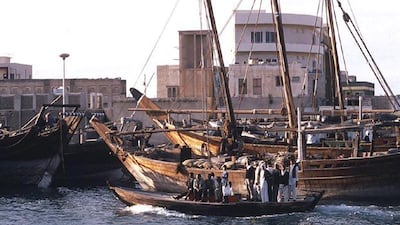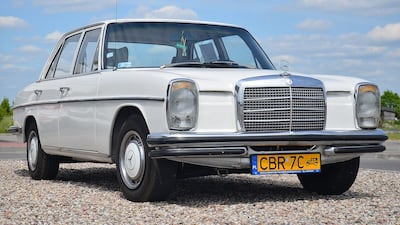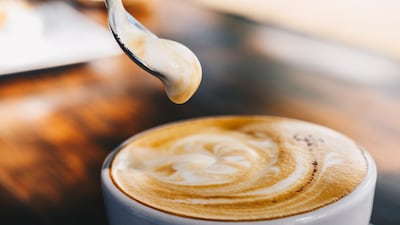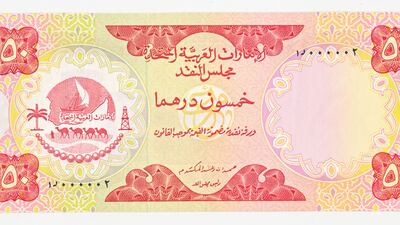Fifty years ago the UAE introduced a new currency for a new country. Out went the old dinar and riyal, and in came the dirham, and its subdivision, the fils.
The value of the dirham, though, was very different in 1973. Allowing for inflation, the purchasing power of a single dirham back then would be the same as around Dh7 in 2023.
Today, you won't get much change out of Dh20 for a Starbucks or Costa cappuccino. Fifty years ago that same hot drink would cost only Dh2 – the equivalent of spending Dh140 today.
Not that there were any fancy coffee shops in 1970s Dubai or Abu Dhabi. Even colour TV would not be available for another year. Which was probably just as well. A 21 inch set – top of the range at the time – would have set you back the equivalent of about Dh7,500 today when colour broadcasting arrived in Dubai in 1974.
A new 1973 model Mercedes might seem like a bargain at Dh36,000, but you would need the equivalent of Dh250,000 today.
From the beginning, the dirham has matched the dollar exchange rate, a peg of about one dollar to Dh3.67. The reason was simple. Oil, by far the UAE’s most important export, was also priced in US dollars, and the peg gave the currency a degree of stability.
Not all products were subjected to price increases. Back in 1973, a pocket electronic calculator, newly arrived on the market, cost about US$100 or Dh396. But 50 years ago you would have needed the earning power of Dh2,700 to afford what today is merely a free feature on a computer browser.
Other products have also withstood inflation. When Coca-Cola increased the price of a can by 50 fils to Dh1.50 in January 2011, it was the first increase for two decades.
The year 1973 also featured a steep rise in global food prices, with inflation reaching 20 per cent in some countries. Despite this, the UAE was importing record amounts of food, with the US Department of Agriculture reporting many products nearly doubling in the year ending 1974.
Total imports rose from US$780 to almost $2 billion in a year, the report noted, with products most in demand from US companies including canned sausages, macaroni and canned peaches.
The UAE, it noted, was a “rich new nation” thanks to oil, with “the world’s highest capita GNP [Gross National Product] exceeding $10,000” – the equivalent of US$68,000 today or Dh250,000.
The year 1973 was memorable not only for the launch of the dirham, but for the wealth of the country. The October War saw an oil embargo imposed by Opec against countries that had supported Israel. By the end of the embargo, the following year, oil had risen in price by 300 per cent in dollars – and in dirhams.









